A Tour of The Iberian Peninsula: Exploring Six Wines of Spain and Portugal
Follow our wine writer Antony Bruno as he travels through the wine regions of the Iberian Peninsula, all from his seat at a wine tasting in our cellar room here at Uncorked Kitchen.
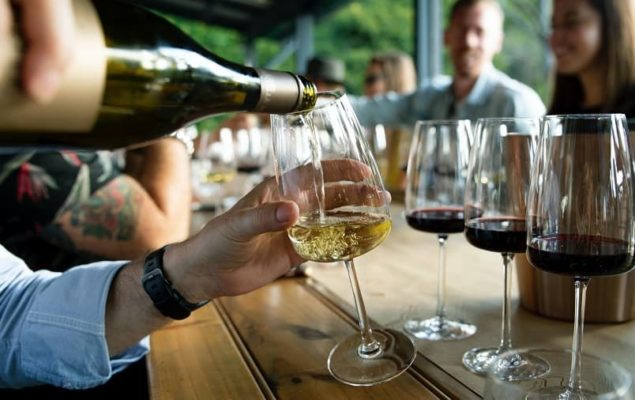
“The varietal is not the star here.”
That’s the biggest lesson coming out of the Uncorked Kitchen & Wine Bar’s wine tasting class “Wines of Spain & Portugal.”
For many wine drinkers, particularly beginners just learning their way around, recognizing the kind of grape used in making wine tends to be the first focus. But equally, if not more important, to the enjoyment of wine is the region (appellation) and winemaking process… in this case, the blend of grapes used to make each vintage.
Tasting the wines of Spain and Portugal make this point abundantly clear. Both countries on the Iberian peninsula developed largely independently of the more fashionable wine region neighbors of France and Italy, and therefore grow and use grapes less familiar to the everyday wine drinker. Instead, they create exciting and inventive blends of sometimes up to six (or more!) grapes.
Keeping track of all those names can be a daunting challenge to even the most experienced wine aficionado. So during this two-hour tour of the Iberian Peninsula, the focus was on the regions, the blending, and the winemaking technology to guide our way.
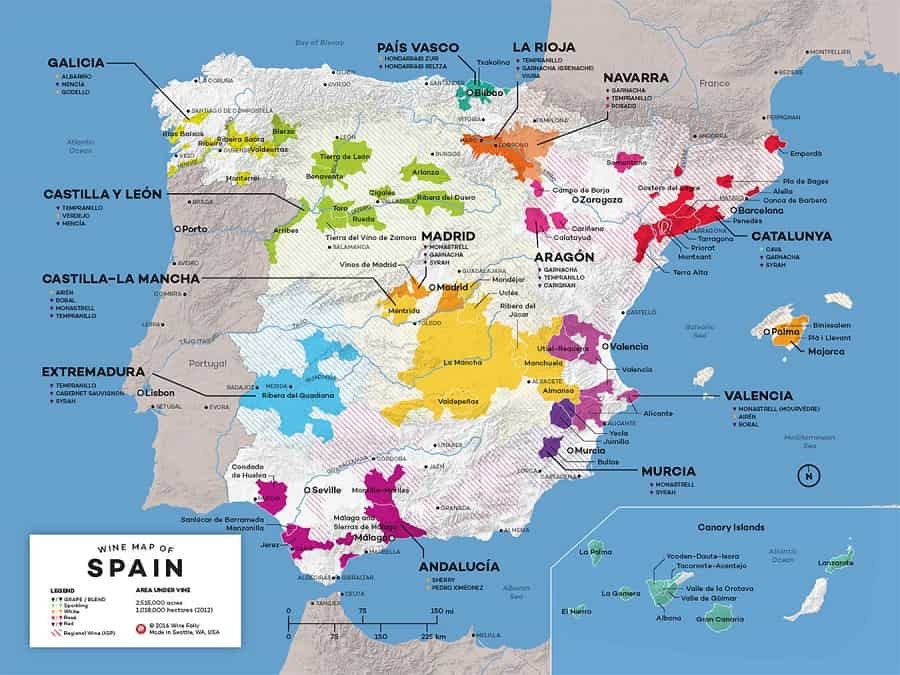
Start with the vast acreage of Spain
Spain is the world’s third largest wine producer and boasts the largest grape acreage in the world. Due to the warmer weather and dry soil, vines there need to be planted further apart, resulting in more than 3 million acres under vine.
While historically known as a producer of sherry, its winemaking prowess remained relatively unknown to the outside world until the second half of the 19th century after French expertise and technology migrated to the area following the phylloxera aphid blight that destroyed all of Europe's wine crops.
Although warmer than its French neighbor, the heat is offset by elevations about 1,000 feet higher, which helps the wine maintain both acidity and freshness. Spain’s territory is also notable for its atmospheric variety, from the hot and dry southern coast along the Mediterranean sea, to the cooler climates of its northern Atlantic-facing mountains.
In this class, we tasted wines from the Castilla/La Mancha, Navarra, and Rioja regions.
Castilla/La Mancha
Castilla/La Mancha is located in central Spain, just south and east of Madrid over a high plateau of flat vineyards that covers more ground than all of Australia’s vineyards combined. While over two-thirds of the vine planted here are dedicated to reds, we took a different approach and started off with a white.
Friend & Farmer Verdejo — (La Mancha, Spain)
This wine stands out in not only the fact that it's a white wine in a region that primarily produces reds, but also that it’s the only selection among the wines sampled to feature a single varietal—Verdejo. Aged up to six months in stainless steel with minimal intervention, the Verdejo resembles a French sauvignon blanc, such as a Loire Valley Sancerre. Notes of kiwi and pear highlight a crisp minerality with a subtle finish.
Navarra
Navarra is further north, in the Basque region bordering France, curving around the northeastern corner of the Rioja region. The primary grape here is Garnacha, but a lot of the land has been replanted with tempranillo, cabernet sauvignon, merlot, and chardonnay thanks in part to the high volume of French wine merchants that settled in the area. So we chose a wine that mixed two of the most prevalent local varietals:
Itxas Harri “Beltza” Garnacha (Navarra, Spain)
This light-colored red has a freshness and lower alcohol level (12.5%) more typical of coastal regions rather than the inland region where it resides. Its 50/50 blend of Garnacha and tempranillo provides a fruit-forward freshness that pairs well with such regional cuisine as grilled artichokes and other fresh veggies, reminiscent of a classic pinot noir.
Rioja
Finally, there’s the well-known Rioja region, which is divided into three zones of wildly differing temperatures, altitude and soil—Alta, Alavesa, and Baja. Tempranillo is the most important variety here by far (with 60% of vineyards dedicated to the grape) followed by Garnacha and other reds for blending.
The classic Rioja style creates a red wine pale in color and aged in American oak. More recently winemakers shifted to longer maceration and shorter aging in new French oak. But the old, traditional style is now making a comeback as this next selection illustrates.
Remelluri Reserva (Rioja, Spain)
Featuring a blend of 85% tempranillo, 10% Garnacha, and 5% Graciano from vines planted between 1930 to 1989, this certified organic and vegan wine is made with low intervention, unfiltered and minimal sulfur at bottling. Fermentation takes place in steel and barrels of various sizes, with 21 months of aging barrels followed by 5 years in the bottle. Although a lighter style of Rioja with notes of blackberry and blueberry, it pairs well with meaty dishes.
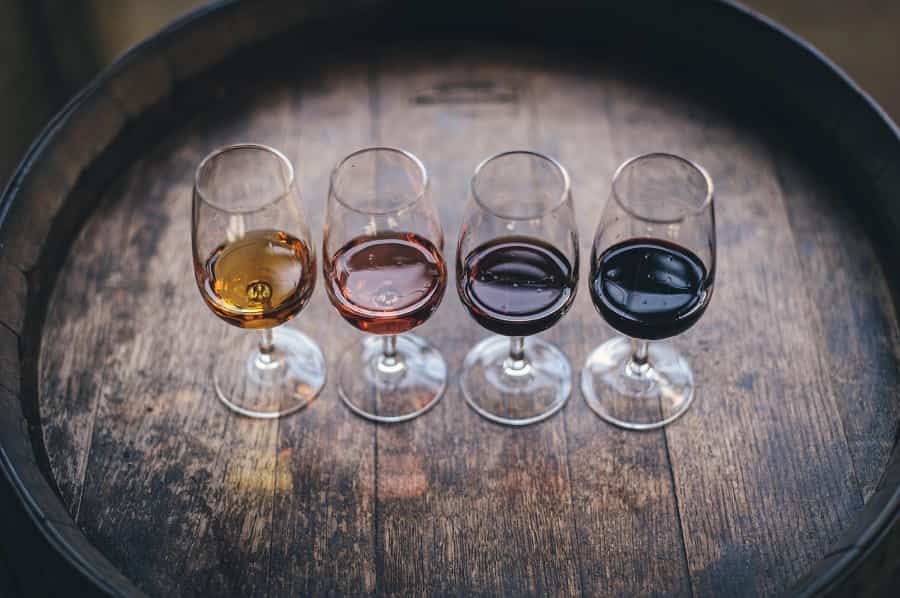
Other notable regions in Spain include:
- Rías Baixas: Located in Galicia (aka “Green Spain”) on the Atlantic, this is home to Spain’s most popular white grape, Albariño — a beautifully perfumed, salty, usually unoaked wine.
- Bierzo: Just east of Rías Baixas, produces fashionable, refreshing reds from the Mencia grape.
- Ribera del Duero: Located in Castilla y León, in the inland north, it now rivals Rioja as Spain’s foremost red wine region – known for tempranillo, which they call “Tinta del País” or “Tinto Fino.”
- Catalonia: In the northeastern portion of Spain (home to Barcelona), prides itself on being different from the rest of Spain. Priorat is the most notable red wine-making region utilizing carignan and Garnacha grapes, while 95% of the champagne-like Cava is produced here in the Penedès.
- Valencia: In the middle of the country on the eastern coast, is home to the indigenous Bobal grape (the second-most planted grape in the country behind tempranillo), as well as Monastrell (aka mourvédre) and syrah. These red varietals make up the ripe, higher-quality wines that have become the focus of this area.
- Andalucía: On the southern tip of Spain, known as the home of sherry.
- The Canary Islands: These islands lie far southwest in the Atlantic near Morocco and Western Sahara. The region produces delicious, zesty whites and serious reds from the native callet grape.
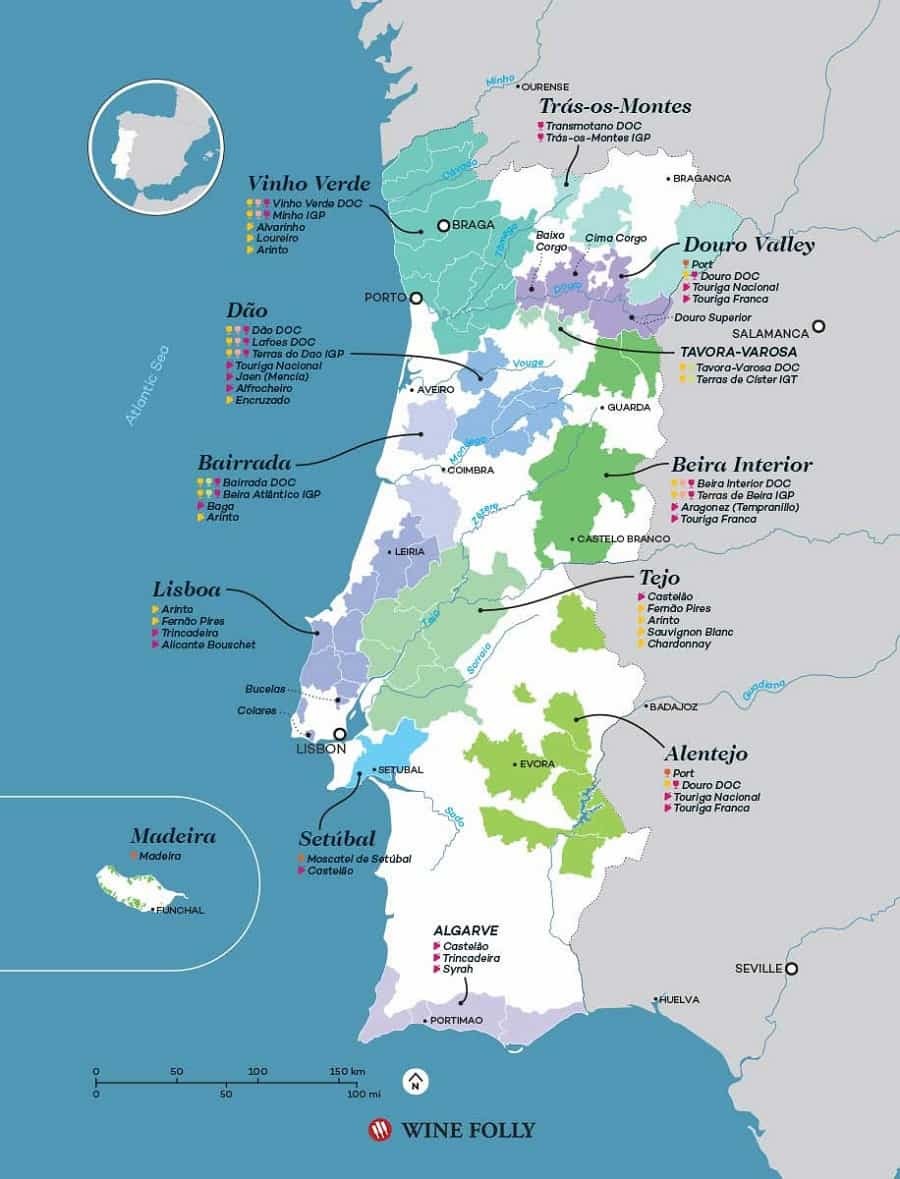
Continue on to Deep Wine History in Portugal
Portugal is rarely among the first countries that come to mind when thinking of major wine producers. But while this country smaller than the size of Kentucky ranks 14th in the world in wine production volume, it ranks first in wine history.
Portuguese winemaking dates back nearly 4,000 years with the influence of such ancient civilizations as the Phoenicians, Carthaginians, Greeks, and Romans. Of the 14 major wine regions in the country, the Douro region claims to be the world’s first demarcated and regulated wine region, established in 1756.
Although port is the most recognizable star of the region, Portugal boasts more than 230 wine varietals, many of which do not grow anywhere else in the world. Not only are they less recognizable than the cabernet sauvignons of the world, but many of these grapes were also developed before the country settled on a common language, meaning in many cases the grapes have more than one name.
What’s more, Portuguese winemaking developed mostly independently from the more recognizable wine regions of France and Italy, featuring nearly endless combinations of indigenous blends that largely ignore the more fashionable grapes most of us are familiar with. While this produces some of the most delicious wines on the planet, it also makes for a wholly unique (but understandably confusing and unfamiliar) wine experience.
What does this mean for you, the wine drinker? Simply put—value. Because of its less ”sexy” stature among wine regions, it’s common to find wines of fantastic quality for an absolute steal of a price (generally $20 or less).
In this class, we tasted wines from the Minho, Dão, and Douro regions.
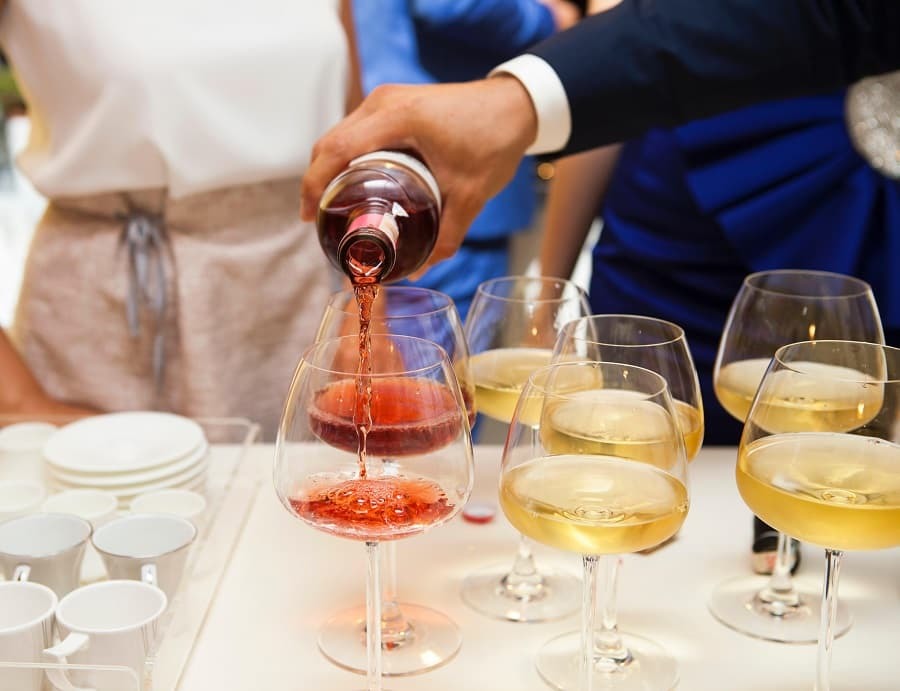
Minho
The Minho region is known for its Vinho Verde wines, derived from 9 different sub-regions of the area in the northwest corner of Portugal. Vinho Verde is literally translated as “Green Wine” which refers more to the fact that it’s a young wine, not the color. In fact, Vinho Verde produces white, rose, and red wines. But it’s most famous for the high-acid, low alcohol, and slightly fizzy (bubbly) white Vinho Verde, which we tried tonight.
Aveleda "Fonte" Branco (Vinho Verde, Portugal)
The “Fonte” is a blend of loureiro, arinto, trajadura, and fernao pires grapes. A very “traditional” style Vinho Verde, both light and acidic with only 9.5% alcohol. The grapes are harvested at night, which allows them to keep their freshness and preserve their aromatic properties. Just a hint of bubbles at the front end give it a spritz-like kick, revealing a well-structured finish thanks to lees-contact fermentation.
Dão
The Dão region is one of the oldest and most complex regions of Portugal, including occasional snow! Its temperate climate and soils earned it the nickname “Portuguese Burgundy.” While Touriga Nacional is the main varietal grown here, we focused on a more nuanced blend.
Gota Wine “Prunus” Tinto (Dão, Portugal)
This dark ruby colored blend features 80% jaen (aka mencía), 10% tinta toriz, 5% alfrocheiro and 5% other. It’s a field blend from vines grown on granite and clay on the highest mountain in Portugal — Serra de Estrela — where the vines fight frost in the winter as well as the baking sun in the summer. The result is a balanced, silky texture and notes of plum, mulberry, and blackberry best summarized in one word… smooth!
Douro
And of course the Douro, home to the famous fortified port wine, but is now finding success in producing lush, complex and age-worthy dry red wines as well. The region is known for its unforgiving, unstable, rocky terrain, as well as for some sublime wines, like this one.
Quinta das Carvalhas “Tinto” (Douro, Portugal)
Writings about this particular vineyard can be traced back to 1759. It features various planting altitudes – from the top of the slope (to provide freshness and elegance) to the base of the river (for structure, power and richness). This blend of 60% touriga nacional, 20% touriga franca, and 20% tinta roriz (aka tempranillo) is aged 12 months in French oak barrels. The result is sublime, balanced wine with noticeable but not overpowering tannins with a pleasant, long-lasting finish that calls to mind an elegant Bordeaux.
Other notable regions in Portugal include:
- Port: Lies along the Douro river, this sweet, fortified wine put Portugal on the international wine map.
- Bairrada: A rural district that is home to the indigenous baga grape — more and more producers are focusing on this varietal here and making high-quality wine from it and even likening it to Nebbiolo!
- Lisboa, Tejo & Península de Setúbal: Feature many indigenous varietals, with the exception of syrah and aragonês (aka tempranillo).
- Alentejo: An up-and-coming area with a vast landscape located inland on the Spanish border. This region has exploded in its number of producers from 45 in 1995 to 260 in 2010.
- Madeira: Located 400 miles off the coast of Africa, Madeira is famous for its ranging styles of “maderized” fortified wines.
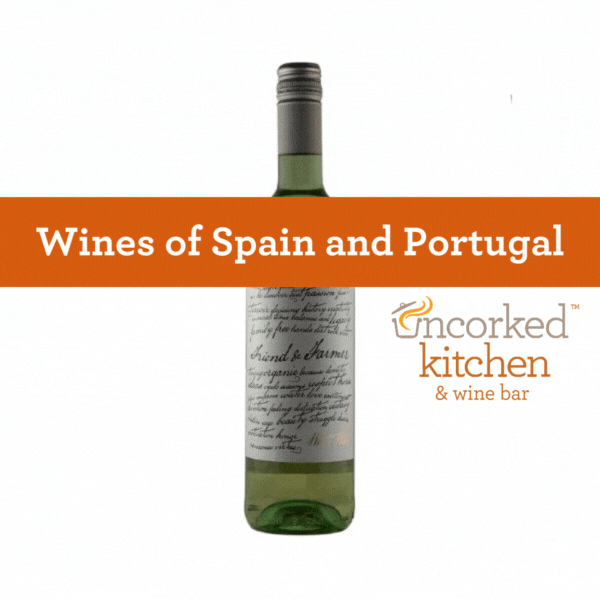
Immersing yourself in a wine-producing region and its various appellations is one of the most interesting and informative ways to appreciate wine. And few regions are as complex, varied, and just plain satisfying as the Iberian peninsula. Whether you’re team Spain, team Portugal, or just team GOOD, tasting your way through these exciting regions is virtually impossible not to enjoy.
Keep an eye on the Uncorked Kitchen & Wine Bar events calendar to see when our next regional exploration is taking place, and take a guided tour of the top wine-producing regions for yourself.

Antony Bruno is a Colorado-based veteran storyteller, writer and editor. After 30 years of writing about the intersection of technology and culture, he’s spending the next 30 writing about food, wine, travel, and adventure.
Hours
Closed Monday
Tuesday-Friday 3pm–10pm
Saturday 12pm-10pm
Sunday 12pm-6pm
HAPPY HOUR
Tuesday-Friday 3pm–6pm
Sunday 12pm-6pm
